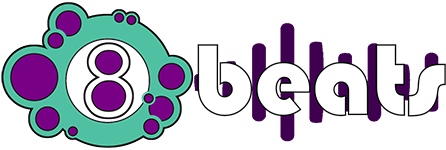Content
FIFO(first in first out) is a method to account for an inventory in a way that the stock purchased first will be sold first so that the leftover inventory is always the recently purchased inventory. For the perpetual FIFO cost flow assumption, the company records sales as they happen in the ledger. A periodic inventory management system operates exactly as its name suggests — inventory is tracked by a periodic physical count of every item in stock. Among the advantages of this approach are reduced costs, user-friendly processes, and simple record-keeping. An additional entry that is related to the periodic inventory system, but which does not directly impact inventory, is the sale transaction. The following entry shows the transaction that you record under a periodic inventory system when you sell goods.
All the same, the periodic inventory system seems to have a soft spot for most small business owners. Generally, the companies that apply the periodic inventory system cannot know the cost of goods sold or the exact number of goods in inventory until a physical count is conducted. For this reason, the system is recommended for businesses with a low number of SKUs in a relatively slow market. The Periodic Inventory System is an inventory management tool where a physical count of available inventory is conducted on a periodic/scheduled basis.
Definition of Periodic Inventory System
The accountant removes the balance to another account at the end of the year. Because costs are not tracked on a real-time basis, it becomes rather difficult for one to value their inventory when using the periodic inventory method. The preferred inventory valuation method for most businesses that use this system is Last In, First Out (LIFO). LIFO operates on the assumption that the recently bought stock items are the first to be sold or used. This means that the ending inventory value is derived from the cost of the oldest items in stock. As the two sets of circled entries indicate, two things happen when there is a sale or a sales return.
- Once the ending inventory and cost of goods sold are clarified, the accounts require adjustment to reflect the ending inventory balance and the cost of goods sold.
- Cost of goods sold refers to the direct cost of the sold products, such as raw materials and labor.
- Then it is completely emptied when the balance is transferred to the inventory account at the end of the accounting period.
- You take the beginning inventory costs for a period, add the cost of inventory purchases during the interval and subtract the cost of your remaining inventory after you’ve gathered your ending count.
Because you don’t have to buy any software to use this system, it becomes extremely cheap to implement. In fact, the only thing you need to invest in to use this system is the time needed to take the physical inventory. Additionally, you will never incur costs in inventory management for as long as you are willing to create time for the physical https://kelleysbookkeeping.com/ count. The main problem with a periodic system is that it doesn’t provide real time data for managers. No one knows how much inventory is on hand at any point in time because they are always working off of old data from the last update. The only time a period inventory system is truly up to date is at the end of an accounting period.
Periodic inventory accounting
In the perpetual inventory method, the COGS is also calculated perpetually. As the product gets sold, it increases the cost of sales, aka Cost of Goods Sold (COGS). It encompasses the money invested in producing goods, along with labor and material costs. Click the button below to learn how our team can help with fulfillment for your ecommerce business. When goods are sold under the periodic inventory system, there is no entry to credit the Inventory account or to debit the account Cost of Goods Sold.

This calculation does not include damaged goods, lost goods, broken goods, and returned goods. That’s why you should always report missing, broken, or returned goods as soon as you encounter them for inventory precaution. The victory is you gaining a massive profit while making your customers happy. Unless you have very few inventory transactions and do not even plan to expand. Practically, if you run a manufacturing business, you will
do better by implementing a perpetual system early on. We write regular articles that help drivers and businesses become better at all things delivery.
Email A/B testing – The quickest method to increasing your email performance and revenue
You can consider this “recording as you go.” The recognition of each sale or purchase happens immediately upon sale or purchase. Your selection should depend on these parameters – the nature of your business, your requirements as a seller, and your plans. Refer to the table below to understand how the accounts would look like in the periodic inventory method. Last in first out (LIFO) is the cost flow assumption that is used by business to calculate the worth of their inventory. The only difference is that here the last-placed stock is sold first, and thus the leftover inventory is the inventory that was purchased first i.e. the oldest one.
In between the allocated accounting period, one can’t tell the cost of goods sold when using this system. Ultimately this means that crucial decisions such as planning for changes in demand, optimizing production, or determining the optimum level of inventory are hard to make. The disadvantages of periodic inventory systems are the slow process and less fidelity in inventory updating. This system is better suited for small businesses with fewer goods or slow-moving goods with less variety. Even with a perpetual inventory management system, the company still needs to shut down at least once each year to do a periodic, manual inventory count.
All actions pertaining to the manufacture – sales, purchases, inventory movements, shop floor activity, etc. – are recorded in the software, and shared with the relevant parties. This way, all departments have the information they need at hand at all times. Because manufacturing companies often carry inventory items in the thousands, stocktake could be very time-consuming. That is why a physical count is usually performed once a month, once per quarter, or even less frequently. On the plus side, this means you don’t necessarily need to rely on complex software or technology to maintain inventory accounts. While these systems can offer more accurate and updated inventory data, they also come with higher costs — as you’ll need to invest in hardware, software, and employee training.
- But the periodic inventory system can still be a good option if your small business has limited resources and straightforward inventory needs.
- The cost of products sold can be calculated by using either the periodic inventory formula method or the earliest cost method.
- There are a few metrics you will track and use in a periodic inventory method — beginning inventory, purchases, and ending inventory.
- Both are far from ideal customer experiences and can add extra stress on your staff.
Finally, subtract the ending inventory balance (or closing inventory) from the cost of goods available to determine the COGS. The debit, merchandise inventory (ending), is subtracted from that total to determine the balancing debit to the cost of goods sold. The periodic method does not record the cost of the inventory sold for a particular sale.
For example, XYZ Corporation has a beginning inventory of $100,000, has $120,000 in outgoings for purchases and its physical inventory count shows a closing inventory cost of $80,000. At the end of the year, a physical inventory count is done to determine the ending inventory balance What Is The Periodic Inventory System? and the cost of goods sold. Notice that there is no particular need to divide the inventory account into a variety of subsets, such as raw materials, work-in-process, or finished goods. Periodic inventory systems are best for smaller businesses with just a few products to track.

For instance, a retailer might record sales and purchases every other Saturday. For two weeks the invoices will pile up and then be entered into the system or updated every two weeks. It’s difficult to maintain and accurate record of inventory every single day in real time if someone is doing it manually. If your business is small, using periodic inventory management may work for you because you can operate with just a cash register and simple accounting procedures. The scanned barcode sales data tell the business owner exactly what inventory should still be on hand.
